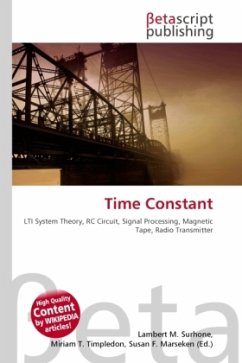Please note that the content of this book primarily consists of articles available from Wikipedia or other free sources online.In physics and engineering, the time constant, usually denoted by the Greek letter (tau), is the risetime characterizing the response to a time-varying input of a first-order, linear time-invariant (LTI) system. (That is, a system that can be modeled by a single first order differential equation in time. Examples include the simplest single-stage electrical RC circuits and RL circuits.) In the time domain, the usual choice to explore the time response is through the step response to a step input, or the impulse response to a Dirac delta function input. In the frequency domain (for example, looking at the Fourier transform of the step response, or using an input that is a simple sinusoidal function of time) the time constant also determines the bandwidth of a first-order time-invariant system, that is, the frequency at which the output signal power drops to half the value it has at low frequencies.








